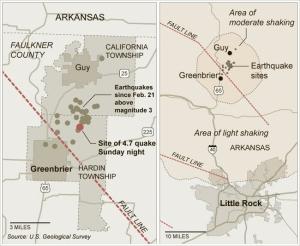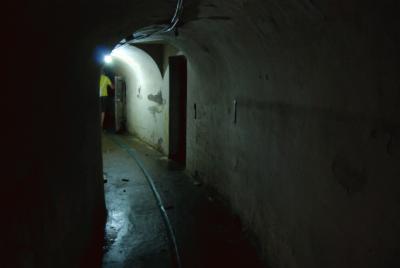The earth is restless in Arkansas – remarkably so – and no one is quite sure why. Since last September, more than 800 earthquakes have rocked the central Arkansas town of Greenbrier, and residents are becoming “unsettled by the[ir] increasing severity and lack of warning.” 1
The Huffington Post reports that
earthquakes ranging in magnitude from 1.8 to 3.8 have
rattled the north-central Arkansas cities of Greenbrier and Guy this
week, and the cause is unknown.
The U.S. Geological Survey has reported more than 30 earthquakes in
the area since Sunday [February 13], including a magnitude 3.8 quake Thursday morning
and at least 16 others occurring Wednesday, two of which were magnitude
3.2 and 3.5.
The latest quake to shake the area was
A 4.7-magnitude earthquake that researchers described as the largest in
Arkansas in 35 years […] There were no reports of major damage, though some residents spoke of
dislodged screen doors and cracked ceilings. Damage or not, some said
this was the longest and scariest quake yet.
While experts are largely at a loss to explain this swarm of earthquakes, some scientists have suggested a connection to natural gas drilling in the area:
Researchers with the Arkansas Geological Survey have pointed out
spatial and temporal relationships between the earthquakes and the use
of injection wells, which are used to dispose of the wastewater left
over from gas drilling. (Researchers see no such correlation between the
quakes and the drilling itself, a process called hydraulic fracturing.)
While a possible connection is being studied, the Arkansas Oil and Gas
Commission has imposed an emergency moratorium on the drilling of new
injection wells in the area.
You can read more here. (Map from NYT.)



